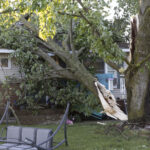While Congress continues to debate whether to launch any sort of national disaster backup plan or add wind coverage to the federal flood program, states are coming up with some of their own ideas — big and small — to help deal with the tight market for coastal property insurance.
South Carolina earlier this year took what many in the industry think are responsible steps to deal with its coastal insurance restrictions. These included extending the advance of cancellation notices to 90 days during hurricane season; offering sales and income tax breaks to residents who make their homes more hurricane resistant; allowing homeowners to put money into tax-deductible hurricane savings accounts; and giving insurers tax credits for writing full-coverage policies along the coast. Alabama and other states have looked to the South Carolina response as a model.
Florida of course has come up with what many in the insurance industry do not consider a viable solution. The state and insurers are at odds over rate filings and the state-backed Citizens is growing by leaps and bounds. But even there, CFO Alex Sink appears to be trying to bring some business sense to the table. She has proposed that the management of the state’s catastrophe fund be given more leeway to set the reinsurance level and prices for optional coverages for 2008.
In its approach, Connecticut has tried through regulation to discourage insurers from requiring expensive shutters or imposing other strict underwriting requirements for coastal properties.
New York Superintendent of Insurance Eric Dinallo has proposed that his state’s property insurers be required to set aside reserves for major catastrophe losses into a new state fund, with the idea that if the fund is transparent and the funds clearly marked for such disasters, lawmakers might eventually be willing to exempt these reserves from state taxes.
Most recently, South Carolina Insurance Commissioner Scott Richardson has begun touting another idea: a claims payment model that could solve the water versus wind damage questions that surfaced in the aftermath of Hurricane Katrina. Rather than figure out water versus wind damage and the maximum probable loss after the fact, he thinks a formula could be devised now to guide settlements after the next storm and reduce the litigation and uncertainty.
Florida several years ago took the lead on another issue that is beginning to percolate among state policymakers. Florida spent billions creating its own hurricane-forecasting model. Other states, while perhaps not willing to put up the money for their own, are talking about opening up the hurricane models that insurers now use to more public scrutiny. These models, although employed by insurers, are owned by third parties including AIR and RMS, which of course do not wish to give away any secrets. But the commissioners are talking more and more about finding out what is in those proprietary models and about the need to tailor the models to state or regional conditions.
These are just some of the discussions taking place in coastal states, many of which would no doubt love to have the federal government take the problem away. But as these proposals suggest, the states are not acting like they expect that will happen anytime soon.
Was this article valuable?
Here are more articles you may enjoy.


 Trump Administration Turning to Private Firms in Cyber Offensive
Trump Administration Turning to Private Firms in Cyber Offensive  Man Sentenced for Flashing Three Insurance Agencies in Georgia
Man Sentenced for Flashing Three Insurance Agencies in Georgia  Death at Universal’s Orlando Resort Roller Coaster Ruled Accidental
Death at Universal’s Orlando Resort Roller Coaster Ruled Accidental  One of Highest Property Claims Severity Recorded in Q3 on Low Volume, Says Verisk
One of Highest Property Claims Severity Recorded in Q3 on Low Volume, Says Verisk 


